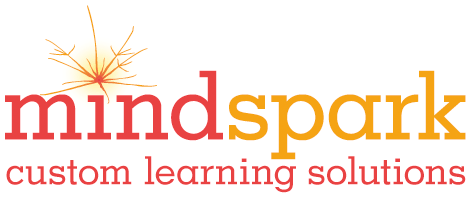Some kids love nothing more than being told they are allowed to write about absolutely anything they want to for an assignment. Freedom! Choice! Stories of slumber parties on deserted islands and basketball games won in the last seconds flow from young pens.
But for a few students, choice means stark terror. The blank page, the blank mind. What do you mean I have to think of something to write about?
One fourth-grade student came to my private practice because, despite being a voracious reader, an amazing speller and an impeccable grammarian, he froze anytime he was asked to write. The more open ended the assignment, the deeper the freeze. We spent an entire session early on in our work together with me vacillating between cajoling, encouraging and being tough, and him emitting an almost continuous, monotone Uhhhhhhhh…for forty-five minutes straight. Stark terror. Mental deep-freeze.
Luckily, after talking with his parents, reflecting on my interaction with him and poking about the internet, I realized he was not being surly, stubborn or defiant; he was frozen with anxiety, the anxiety of facing an open-ended assignment: the threatening question, “What do you want to write about?”
There are many reasons why that seemingly innocuous question might be difficult for a student, from not understanding what makes a good story, to expressive language difficulties, to rigid thinking from an Autism Spectrum Disorder or another disorder, to just being too tired to think of anything interesting.
The approach that I have found the most useful for getting stuck kids going on their writing is a series of forced-choice questions: Do you want to write something real or fictional? Funny, scary, realistic or fantasy (or if the answer was something real, I replace the last two questions with embarrassing or awesome)? Is the main character a boy or a girl? Human or animal? Kid, teenager or adult? In school, at home or somewhere else? What problem are they facing? Is it with their parents, their friends, themselves or nature?
I have never had a student not be able to answer these questions, and answer them almost immediately, to boot. So, what is going on? You as the teacher are scaffolding the decision-making process for the student. Suddenly, instead of trying to think of all the possible stories in the whole wide world, the student just has to make one decision at a time. Whew! Anxiety goes down, processing goes up. Further, the questions create images in the student’s head, so that slowly a whole story begins to emerge in their imagination.
Notice also that you are helping them choose all the main elements of a story: character, setting, plot (problem); you’re simply making each one easier by narrowing it down to two or three choices. As an added bonus, you can weave in any other literary choices you have been working on, “First person or third person? Past tense or present tense?”
Like all good scaffolding, you will want to slowly pull it away. The next time your student needs to choose a topic, you may ask him or her to remember what questions you asked the last time. The two of you can make a graphic organizer with the questions on it. Eventually, once the choices are internalized, then the more common graphic organizers with a box each for setting, character and problem should be enough.
So the next time you ask a student “What do you want to write,” and they become a deer in the headlights instead of an excited, empowered author, try guiding their decision-making with a series of forced-choice answers. Your student’s nervous system, and yours, will thank you.
copyright Diana Kennedy 2014





will definatly use this approach with my reluctant writer!
Great. Let me know how it goes!
Wonderful article! Great teacher!